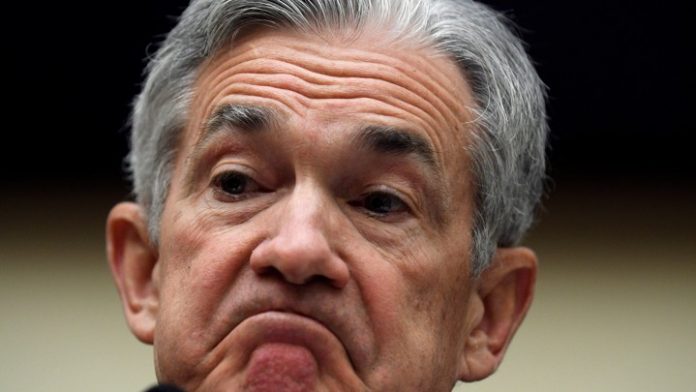Stocks are slipping this morning as a crucial Federal Open Market Committee (FOMC) meeting looms. The Dow, S&P, and Nasdaq Composite all sunk shortly after the market opened.
Treasury yields are worrying investors again, too. The 10-year Treasury note yield is down from its Friday peak but remains near the 13-month high.
That sent tech slightly lower today, as expected, along with the broader market.
“Bond yields remain the primary risk facing the stocks market,” explained Jim Paulsen, chief investment strategist at the Leuthold Group.
“However, they [were] calm so far this morning and as the speed of their recent advance pauses, it’s allowing investors to focus more on just how low yields remain overall.”
Goldman’s chief U.S. equity strategist, David Kostin, also noted the tough situation facing bulls and bears alike.
“Investors will have to continually grapple with the anxiety about economic overheating and Fed tightening that has gripped markets in recent weeks,” Kostin wrote.
“We believe equity valuations should be able to digest 10-year yields of roughly 2% without much difficulty.”
A slow climb to 2%, maybe, but not a fast one. At present, the 10Y Treasury yield idles around 1.60%.
It’s likely that a marked rate increase in a short amount of time would cause significant panic.
And it’s all because the Fed has kept its thumb on Treasury yields for years. Foreign central banks, like the ECB, have done the same with their own sovereign bonds. It started innocently enough with quantitative easing (QE), an economic countermeasure that was intended to calm a terrified, post-Financial Crisis market.
QE provided ample liquidity while making Treasurys, an effectively no-risk asset, highly attractive. The mass purchasing of Treasury bonds (by the Fed and others) allowed banks to lend more and more, bolstering a wounded U.S. economy.
Then, once the healing process finished, the Fed’s plan was to sell Treasurys. Doing so would bring monetary policy to a happy medium between dovish and hawkish via the unloading of the Fed’s balance sheet.
But that didn’t happen. Instead, the Fed let the Treasury momentum snowball while its balance sheet swelled. What were once undervalued assets became extremely overvalued. In Europe, the ECB began purchasing sovereign bonds despite negative yields. Europe’s economy then started to struggle, compounding the European bond market’s issues. European debt hit historic highs and yields fell to once inconceivable lows.
Thanks to the central banks’ inability to reign-in QE, any notable increase in yields is going to rock the entire financial system, now. Economists have long used the phrase “taper tantrum” to describe what happens when investors fear that the Fed will tighten monetary policy.
With $1.9 trillion in stimulus being deployed, another major infrastructure bill being built, and an FOMC meeting set to conclude this Wednesday, taper fears could quickly re-emerge. In the past, central banks were able to get away with a “perma-QE” policy simply because inflation wasn’t threatening to unravel the economy.
But these days, inflation is of major concern. The markets have operated on the understanding that the economy will continue growing, inflation won’t spiral out of control, and the Fed will keep rates low regardless of what happens.
If just one of those three market “pillars” fails, the whole structure will collapse. Bulls are watching it teeter as we speak.
So, depending on how the FOMC pow-wow goes, we could be looking at a very different market by mid-week.
That’s what’s paralyzing traders. And it might continue to do so until a verdict is reached on how to handle rising rates.








